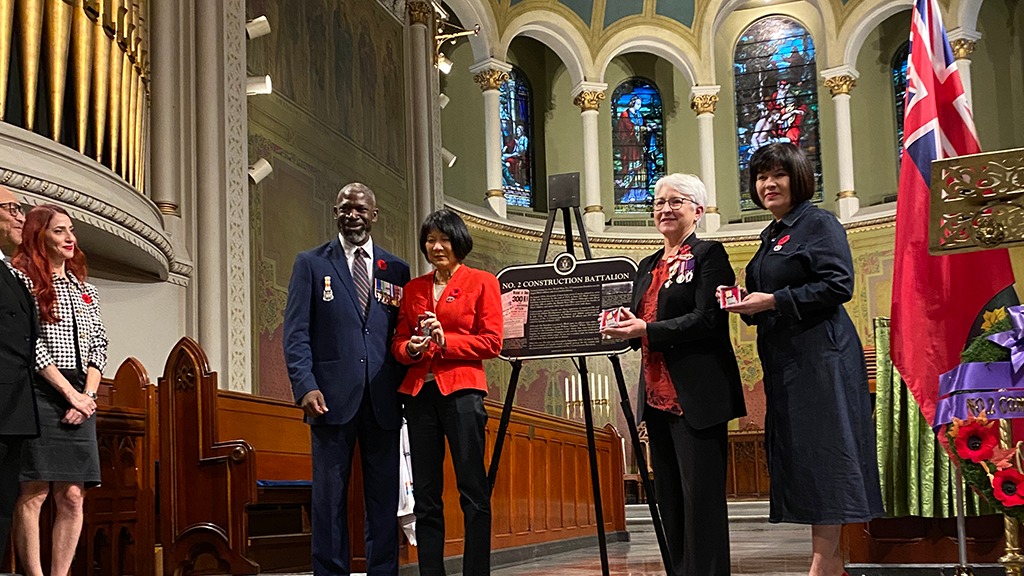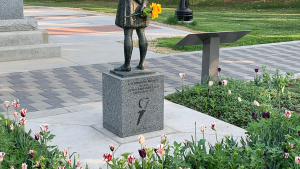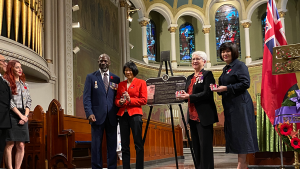TORONTO — The City of Toronto recently commemorated the No. 2 Construction Battalion of the First World War’s Canadian Expeditionary Force with the unveiling of a Heritage Toronto plaque, which will be placed at the corner of King Street West and University Avenue.
Mayor Olivia Chow was joined by Edith Dumont, lieutenant governor of Ontario, Ginette Petitpas Taylor, minister of veterans affairs, along with members of Toronto City Council, veterans, descendants of the soldiers and community members for the ceremony, which took place on Nov. 7.
The location of the plaque is significant as it is close to the original site of the Battalion’s enlistment office at 162 King St. W.
The No. 2 Construction Battalion, also known as the Black Battalion, was created on July 5, 1916, during the First World War. It was a segregated non-combatant unit, the largest all-Black military unit in Canadian military history, a release from the city reads.
The Battalion was created as a construction unit and during their initial service in Canada, they were responsible for removing rails from railway sidings in New Brunswick for shipping to France to support the war effort.
“The Battalion was then sent to England and on to France where they served with the Canadian Forestry Corps,” the release reads. “There, they helped cut timber, transported it to the lumber yards, and cut it into a finished product for use in building and reinforcing trenches.”
They also maintained logging roads, operated water and electrical systems for their camps and cared for horses.
On the war front, they supervised Russian soldiers sent in January 1918 to their camp as labourers.
“Throughout the war members of No. 2 Construction Battalion faced racism,” the city states. “They showed resilience, determination, and strength in the face of adversity. Following the end of the First World War, the unit was officially disbanded on Sept. 15, 1920. The Canadian government offered at a ceremony in July 2022 an official apology for the racism they experienced during their service to Canada.”












Recent Comments
comments for this post are closed